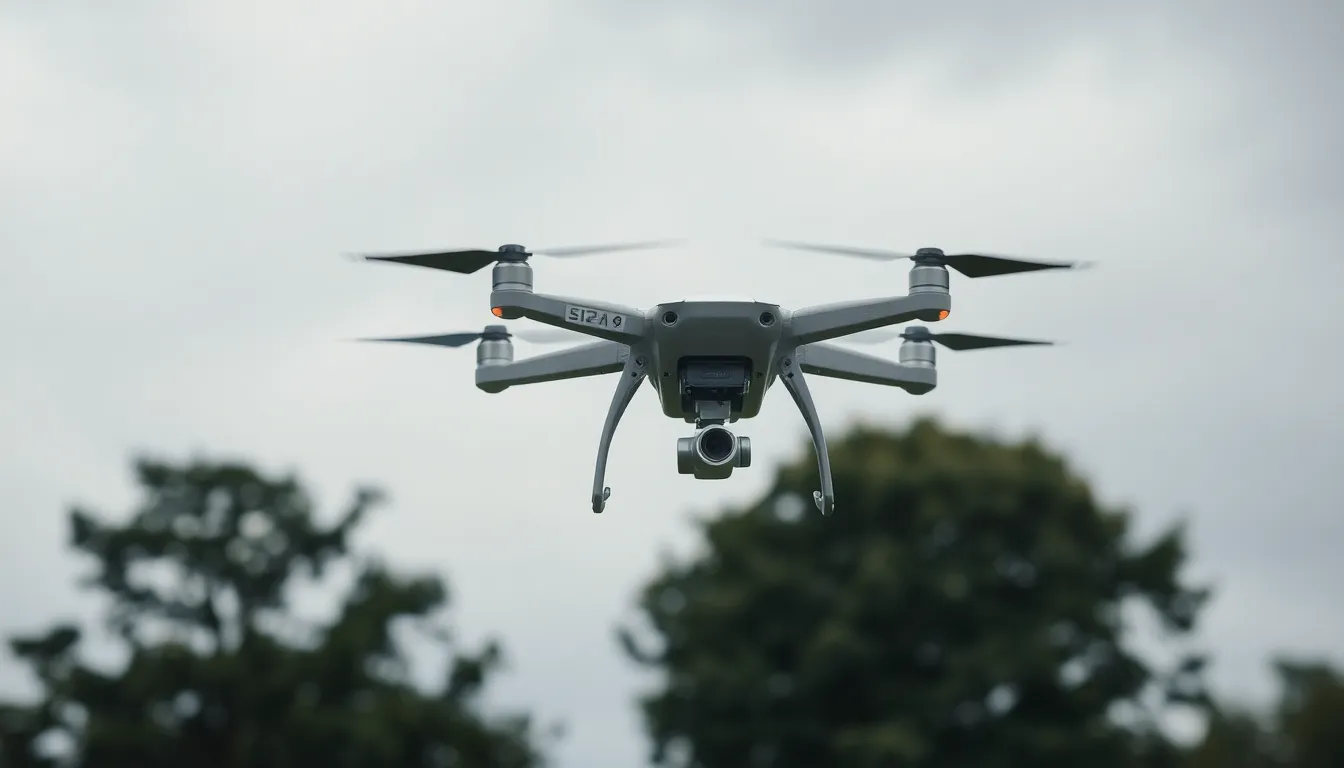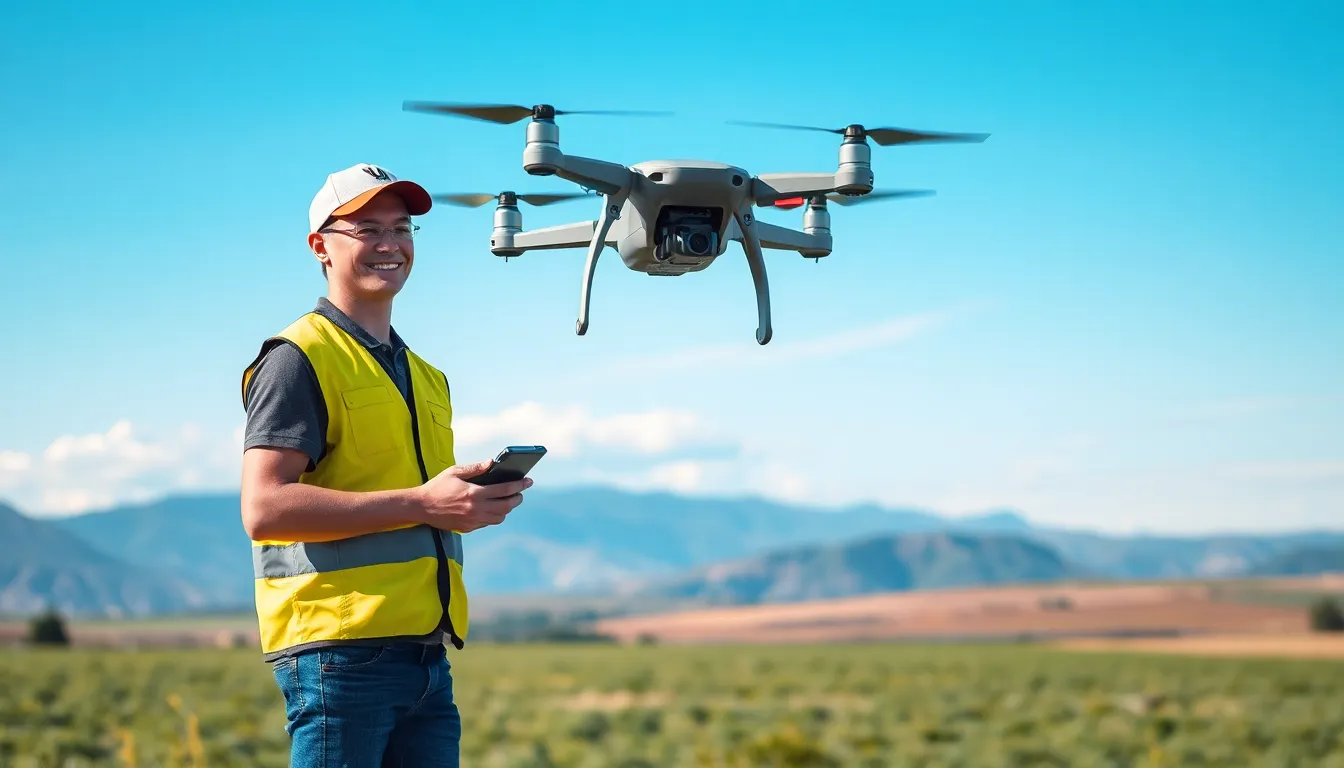As drones become an essential tool across various industries, ensuring their safe operation is more crucial than ever. From aerial photography to delivery services, these flying machines offer incredible benefits but also pose unique risks. Understanding and implementing effective safety measures can prevent accidents and protect both operators and the public.
Navigating the skies with a drone requires more than just technical know-how; it demands a commitment to safety protocols. Whether it’s adhering to local regulations or conducting pre-flight inspections, these measures help mitigate potential hazards. By prioritizing safety, drone operators can enjoy the thrill of flight while minimizing risks associated with this rapidly evolving technology.
Table of Contents
ToggleImportance Of Drone Safety Measures
Safety measures in drone operations play a crucial role in ensuring safe and responsible usage. Implementing these measures reduces risks associated with accidents, injuries, and damages.
Operators must comprehend regulations established by the Federal Aviation Administration (FAA) and local authorities. Adherence to these laws ensures compliance and promotes public trust in drone technology.
Pre-flight inspections help identify potential malfunctions, ensuring the drone operates optimally. This practice secures the safety of both the operator and the surrounding environment.
Furthermore, training programs for drone operators improve their skills and decision-making abilities. Educated operators minimize the likelihood of mistakes that could lead to unsafe situations.
Utilizing technology, such as geo-fencing and obstacle detection systems, enhances safety during flights. These features prevent drones from entering restricted areas and help avoid collisions with obstacles.
Promoting drone safety measures contributes to the industry’s credibility, reinforcing the positive perception of drones among the public. A commitment to safety sets a standard for responsible drone usage across diverse applications.
Common Drone Safety Risks

Drone operations face several safety risks that operators must address. Understanding these risks is crucial for minimizing accidents and ensuring safe flight practices.
Weather Conditions
Weather conditions significantly impact drone safety. High winds can destabilize drones and lead to loss of control. Rain and snow can obstruct visibility and damage electronic components. Operators must monitor local forecasts and avoid flying in adverse weather conditions. Additionally, temperature extremes can affect battery performance, reducing flight time and increasing the risk of malfunction.
Pilot Error
Pilot error stands as one of the leading causes of drone accidents. Mistakes during takeoff, navigation, or landing can result in serious incidents. Operators must undergo proper training to enhance their skills and decision-making abilities. Familiarity with the drone’s controls, features, and operational limits is essential to reduce pilot error. Regular practice in varied environments can further enhance safety by preparing pilots for unexpected situations.
Regulatory Framework For Drone Safety
The regulatory framework for drone safety consists of federal and local guidelines that establish essential operational standards. Adhering to these regulations ensures safe drone use and promotes public trust in this evolving technology.
FAA Regulations
The Federal Aviation Administration (FAA) sets comprehensive regulations for drone operations in the United States. These regulations apply to both commercial and recreational drone users and include:
- Remote Pilot Certification: Operators must obtain a Remote Pilot Certificate by passing an FAA-approved knowledge test. This certification ensures pilots understand airspace regulations, weather impacts, and safe flight practices.
- Registration Requirements: All drones weighing more than 0.55 pounds (250 grams) must be registered with the FAA. Registration helps track drone ownership and promote accountability among operators.
- Maximum Altitude: Drones cannot fly higher than 400 feet (122 meters) above ground level unless they are within a 400-foot radius of a structure. Adhering to this limit minimizes conflicts with manned aircraft.
- Airspace Restrictions: Operators must check the airspace class before flying. Drones cannot fly in restricted areas, such as near airports or military installations, without proper authorization.
- Operating in Visual Line of Sight (VLOS): Pilots must maintain visual contact with their drone at all times. This requirement helps prevent collisions and enhances situational awareness.
Local Ordinances
Local authorities often enact ordinances to address specific community concerns regarding drone use. These ordinances may include:
- Flight Restrictions: Some municipalities impose restrictions on flying drones in certain areas, such as parks, school zones, or densely populated neighborhoods. Operators should review local laws to ensure compliance.
- Noise Regulations: Local regulations might limit drone usage during specific hours to minimize noise disturbances. Operators must be aware of these regulations to avoid fines or penalties.
- Privacy Laws: To protect citizens’ privacy, some local jurisdictions have established laws regulating aerial surveillance and photography. Operators should obtain consent when capturing images or video of private property.
- Permitting Requirements: Certain activities, such as commercial drone photography or agricultural surveillance, may require obtaining permits from local authorities. Failing to secure necessary permits can lead to operational restrictions or legal repercussions.
Understanding the FAA regulations and local ordinances fosters safe and responsible drone operations. Compliance with these guidelines minimizes risks and enhances the credibility of the drone industry.
Best Practices For Ensuring Drone Safety
Implementing effective practices ensures drone safety during operations. Operators contribute to risk mitigation by following established protocols.
Pre-Flight Checklist
A pre-flight checklist enhances operational safety by ensuring all components function correctly before flight. Operators must verify battery levels for adequate power supply, assess propeller conditions for damage or wear, and confirm the calibration of the drone’s flight control system. Checking GPS signal strength prevents navigational issues, while ensuring that payloads are securely attached avoids mid-flight detachment. Before takeoff, operators must also review airspace restrictions to adhere to local regulations and avoid potential collisions. A comprehensive checklist can significantly reduce the likelihood of accidents during operations.
Maintenance Protocols
Regular maintenance protocols are vital for sustaining drone performance and safety. Operators should establish a routine inspection schedule that includes checking motors, propellers, and the structural integrity of the drone. Cleaning the drone after each use, especially sensors and cameras, prevents dirt accumulation that might impede functionality. Updating firmware and software ensures that the drone operates optimally and includes the latest safety features. Documenting all maintenance activities can help track the drone’s condition and identify recurring issues, which facilitates timely repairs. These practices promote reliability and extend the lifecycle of the equipment, safeguarding both the operator and the public.
Technological Advancements In Drone Safety
Drone safety continues to improve with advancements in technology, enhancing operational safety and reducing risks associated with drone operations. Key developments include collision avoidance systems and remote identification technologies.
Collision Avoidance Systems
Collision avoidance systems significantly enhance drone safety by detecting and avoiding obstacles in real-time. These systems utilize sensors, cameras, and advanced algorithms to identify objects in the drone’s flight path. When an obstacle is detected, the system automatically adjusts the drone’s flight trajectory to prevent collisions. Examples include:
- Lidar Sensors: Lidar sensors measure distances to nearby objects, providing precise 3D mapping of the drone’s surroundings.
- Ultrasonic Sensors: These sensors determine proximity to obstacles using sound waves, allowing drones to navigate complex environments.
- Computer Vision: Drones equipped with cameras can analyze visual data to identify and react to potential hazards during flight.
Implementing collision avoidance systems not only protects drones from damage but also ensures the safety of people and property below.
Remote Identification
Remote identification technology enables drones to broadcast their location and identification information to other aircraft and ground observers. This technology helps law enforcement and air traffic controllers track drone operations, enhancing airspace safety. Key components of remote identification include:
- Broadcast Modules: These devices transmit the drone’s identification, location, and altitude in real-time, allowing others to monitor its flight.
- Mobile Apps: Applications provide laypersons and authorities with data about nearby drone operations, promoting transparency and responsible usage.
- Compliance with Regulations: The FAA’s Remote ID rule mandates that most drones in the U.S. must be equipped with remote identification technology, fostering accountability in the drone industry.
Through remote identification, operators contribute to a safer aerial environment, facilitating responsible drone usage and improving public trust in the technology.
Prioritizing drone safety is essential for fostering a responsible and trustworthy industry. By adhering to established protocols and regulations, operators can significantly reduce risks and enhance the overall safety of their operations. Utilizing technology like collision avoidance systems and remote identification further strengthens safety measures, creating a more secure environment for both operators and the public.
Investing in training and regular maintenance ensures that operators remain skilled and their equipment remains reliable. As the drone industry continues to evolve, a commitment to safety will not only protect individuals but also promote the positive perception of drone technology in various applications. Embracing these safety measures is key to unlocking the full potential of drones while minimizing associated risks.


